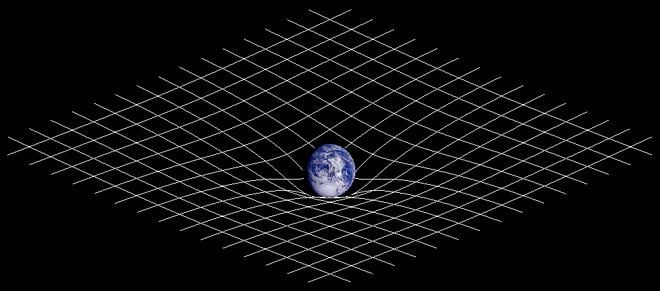 | ||
In physics, relativistic center of mass refers to the mathematical and physical concepts that define the center of mass of a system of particles in relativistic mechanics and relativistic quantum mechanics.
Contents
Introduction
In non-relativistic physics there is a unique and well defined notion of the center of mass vector, a three-dimensional vector (abbreviated: "3-vector"), of an isolated system of massive particles inside the 3-spaces of inertial frames of Galilei spacetime. However, no such a notion exists in special relativity inside the 3-spaces of the inertial frames of Minkowski spacetime.
In any rigidly rotating frame (including the special case of a Galilean inertial frame) with coordinates
both for free and interacting particles.
In a special relativistic inertial frame in Minkowski spacetime with four vector coordinates
It is interesting that the following three proposals for a relativistic center of mass appearing in the literature of the last century take on individually these three properties:
- The Newton–Wigner–Pryce center of spin or canonical center of mass, (it is the classical counterpart of the Newton–Wigner quantum position operator). It is a 3-vector
x ~ → { x ~ i , x ~ j } = 0 in phase space. However, there is no 4-vectorx ~ μ = ( x ~ o , x ~ → ) having it as the space part, so that it does not identify a worldline, but only a pseudo-worldline, depending on the chosen inertial frame. - The Fokker–Pryce center of inertia
Y → Y μ = ( Y 0 , Y → ) , so that it identifies a worldline, but it is not canonical, i.e.{ Y i , Y j } ≠ 0 . - The Møller center of energy
R → m i { R i , R j } ≠ 0 , neither the space part of a 4-vector, i.e. it only identifies a frame-dependent pseudo-worldline. These three collective variables have all the same constant 3-velocity and all of them collapse into the Newton center of mass in the non-relativistic limit. In the 1970s there was a big debate on this problem, without any final conclusion.
Group theoretical definition
In non-relativistic mechanics the phase space expression of the ten generators of the Galilei group of an isolated system of N particles with 3-positions
They are constants of the motion generating the transformations connecting the inertial frames. Therefore, at
In special relativity the inertial frames are connected by transformations generated by the Poincaré group. The form of its ten generators
where
It can be shown, that in an inertial frame with coordinates
at
Since the Poincaré generators depend on all the components of the isolated system even when they are at large space-like distances, this result shows that the relativistic collective variables are global (not locally defined) quantities. Therefore, all of them are non-measurable quantities, at least with local measurements. This suggests that there could be problems also with the measurement of the Newton center of mass with local methods.
The three collective variables as 4-quantities in the rest frame
The inertial rest frames of an isolated system can be geometrically defined as the inertial frames whose space-like 3-spaces are orthogonal to the conserved time-like 4-momentum of the system: they differ only for the choice of the inertial observer origin of the 4-coordinates
where
In this framework it is possible to describe the three collective variables with 4-quantities
The locations in the privileged rest Wigner 3-space of the canonical center of mass and of the center of energy are
and
The pseudo-worldline of the canonical center of mass is always nearer to the center of inertia than the center of energy.
Møller world-tube of non-covariance
Møller has shown that if in an arbitrary inertial frame one draws all the pseudo-worldlines of
Since the Møller radius is of the order of the Compton wavelength of the isolated system, it is impossible to explore its interior without producing pairs, namely without taking into account relativistic quantum mechanics. Moreover, the world-tube is the remnant of the energy conditions of general relativity in the flat Minkowski solution: if a material body has its material radius less that its Møller radius, then in some reference frame the energy density of the body is not definite positive even if the total energy is positive.
The difference among the three relativistic collective variables and the non-covariance world-tube are global (not locally defined) effects induced by the Lorentz signature of Minkowski spacetime and disappear in the non-relativistic limit.
